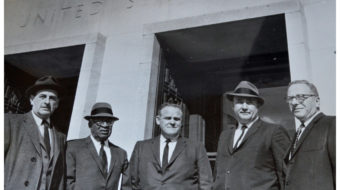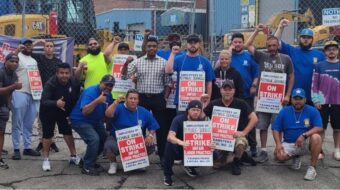Wal-Mart is practically synonymous with “cheaper labor.” Its U.S. clerks averaged $13,861 a year in 2001, some $800 below the miserable federal poverty line for a three-person household. Its subcontractors are infamous for their mistreatment of workers in the U.S. and worldwide.
Forty years ago, Wal-Mart had one store, in Rogers, Ark. Today it is the world’s biggest corporation, with 5,000 outlets worldwide. How did this happen? Isn’t the capitalist system irreversibly monopolized?
An examination of the extraordinary rise of Japanese and southern Korean industry after World War II can shed light on Wal-Mart’s emergence. It is the focus of this column, the first of two installments.
Like Wal-Mart, neither Japanese auto giant Honda nor Korean steelmaker Posco, to take but two examples, even existed 60 years ago. Japan and southern Korea emerged from World War II devastated, with Japan under U.S. military occupation. Honda would not incorporate until 1948. Posco would not emerge until the 1960s. Yet by 1980, Honda, Nissan and Toyota were among the world’s largest corporations, and auto imports claimed 25 percent of the U.S. auto market, up from less than 5 percent in 1955.
Today, Posco is a major force in steel. Steel imports accounted for nearly as large a share of the U.S. market as auto imports. How did Honda, Posco and similar giants, such as Toyota or Samsung, arise?
To competitively manufacture steel or automatic transmissions, it is necessary to have access to technology, capital – and ultimately to the world’s largest market, the U.S.
Analyzing the rise of Japanese industry, the Wall Street Journal pointed out in 1981 that “the Japanese [have] had ready access to American industrial know-how. In fact, much of their present industrial sophistication is based on U.S. technology.” To be sure, that technology was not transferred freely. Japanese corporations paid out $300 million in royalties in 1980 alone. That would indicate that U.S. capitalists had at least some interest in Japan’s production.
But in addition, there also was significant, if little publicized, direct U.S. ownership. GM, for example, has long owned shares in “Japanese” vehicle makers Isuzu, Suzuki (and now Subaru as well, not to mention Saab and Fiat in Europe). Ford owns much of Mazda.
The “Japanese miracle” does not stop there. An examination of Japanese corporations’ balance sheets finds them up to their ears in debt since the end of World War II. Considering Japan’s (and Europe’s) devastation in the war, and the overwhelming concentration of capital in the U.S., it is not difficult to guess who was lending to Honda, Toyota, Nippon Steel, etc.
By 1982, Japanese industrial corporations were among the world’s largest. Even then, U.S. banks directly accounted for 60 percent of a billion-dollar expansion loan to the Japanese steel industry that year, and probably indirectly accounted for most of the remainder. (About $133 million of that loan came from Steelworker union pension funds managed by Mellon Bank!) Similarly, the real source of the South Korean “economic miracle” has been massive loans from the U.S., as Korea historian Bruce Cumings has pointed out.
Between royalties and especially debt, the profit rates of Japanese and Korean manufacturers for decades have consistently been a fraction – sometimes as little as one-tenth – the profit rates of U.S. industrials. In 2002, those Japanese industrials reported combined losses.
So, while there was little investment in the U.S. steel industry through the 1950s, ’60s, and ’70s, there was considerable Wall Street-financed expansion of industry in Japan and South Korea. Without a doubt, one big part of that was to protect against the advance of socialist revolution in Asia.
The tightly-guarded U.S. market, the largest and most profitable in the world, was opened to imports of steel, auto, rubber and other products from Japan, South Korea, and other nations. And this in turn helped rip the ground from under the Steelworkers, Autoworkers, Rubberworkers and other unions in the U.S., and led to the cheapening of labor.
The “miraculous” rebirth of Japanese and South Korean industries turns out not to be such a miracle after all. Behind it we can find Wall Street’s and Washington’s unending efforts to cheapen labor and fend off revolution. This can help us understand Wal-Mart’s extraordinary rise, the focus of this column’s next installment.
The author can be reached at pww@pww.org.










